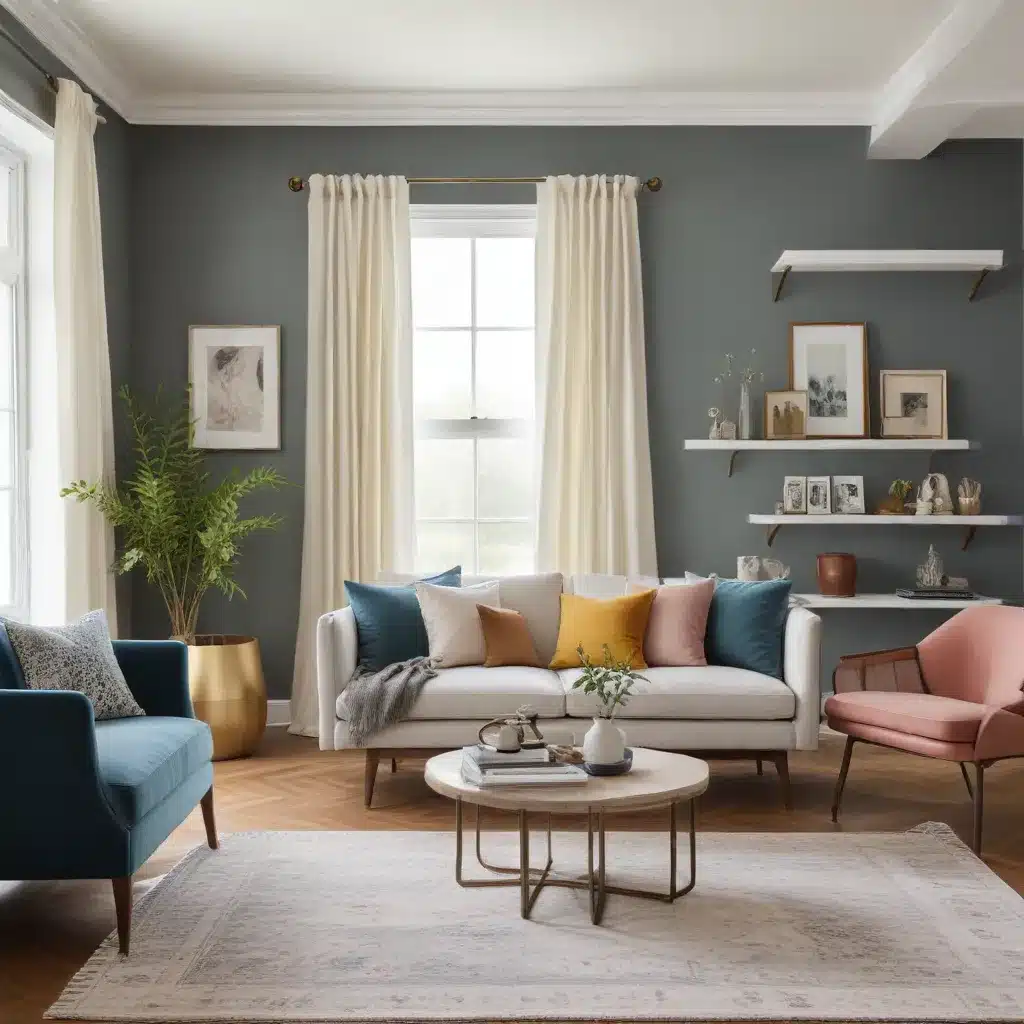
Embarking on a home renovation project can be an exhilarating experience, filled with endless design possibilities. However, one of the most common challenges homeowners face is creating a cohesive color palette that ties the entire space together seamlessly. Whether you’re refreshing a single room or transforming your whole home, mastering the art of color coordination is essential for achieving a visually stunning and harmonious result.
Fundamentals of Color Palette Design
Understanding Color Theory
Before delving into the practical aspects of color selection, it’s important to have a solid grasp of basic color theory. The color wheel, which illustrates the relationships between different hues, is a valuable tool for understanding how colors interact with one another. Knowing the principles of complementary colors (those opposite on the wheel), analogous colors (those next to each other), and triadic colors (equidistant on the wheel) can help you make informed decisions about your color palette.
Identifying Your Design Style
Equally important is understanding your personal design style and aesthetic preferences. Are you drawn to bold, vibrant colors or more muted, earthy tones? Do you prefer a modern, minimalist look or a cozy, traditional feel? Identifying the overall mood and atmosphere you want to create in your home will guide your color selections and ensure they align with your vision.
Choosing Complementary Colors
Once you have a grasp of color theory and your design style, the next step is to start selecting your core colors. Complementary colors, which sit opposite each other on the color wheel, can create a striking and visually dynamic contrast when used together. For example, pairing a deep blue with warm, mustard-toned accents can result in a rich, inviting palette.
Evaluating Your Home’s Existing Colors
Assessing Current Color Schemes
Before you begin your renovation, take a close look at the existing colors in your home. What colors are present in your flooring, cabinetry, fixtures, and architectural elements? Understanding the underlying tones and hues already present will help you determine how to seamlessly integrate new colors into the space.
Identifying Focal Points
As you assess your home’s current color scheme, also identify any prominent focal points, such as a statement fireplace, a large piece of artwork, or a distinctive architectural feature. These elements can serve as inspiration for your color palette, as you’ll want to ensure the surrounding colors complement and enhance these focal points.
Determining Desired Moods
Different color palettes can evoke distinct moods and emotions. Warm colors like reds, oranges, and yellows tend to create a cozy, inviting atmosphere, while cooler tones of blues and greens often feel more calming and serene. Considering the desired ambiance for each room in your home will inform the color choices you make.
Developing a Cohesive Color Palette
Selecting a Color Scheme
With a solid understanding of your home’s existing colors, focal points, and desired moods, you can now begin to develop your color scheme. This may involve choosing a monochromatic palette, where you use various shades and tints of a single color, or a complementary scheme, which pairs two or more hues that sit opposite each other on the color wheel.
Balancing Warm and Cool Tones
When creating a cohesive color palette, it’s essential to maintain a balance between warm and cool tones. Incorporating both can add depth and visual interest to your space. For example, you might pair a warm, earthy-toned wall color with cool-hued accent pieces, such as throw pillows or a glass-topped coffee table.
Incorporating Accent Colors
In addition to your primary color scheme, consider introducing accent colors to add pops of vibrancy and visual interest. These accents can be incorporated through smaller decorative elements, such as artwork, throw pillows, or even an eye-catching light fixture. The key is to use these accent colors strategically, ensuring they complement the overall palette without overwhelming the space.
Applying the Color Palette in Your Renovation
Coordinating Wall Colors
Once you’ve settled on your color scheme, it’s time to put it into practice. Begin by selecting wall colors that serve as the foundation for your palette. Neutral shades, such as whites, grays, or beiges, can provide a versatile backdrop that allows your accent colors to shine.
Selecting Furniture and Textiles
As you move on to furnishings and textiles, look for pieces that align with your established color palette. Upholstered furniture, area rugs, curtains, and throw pillows are all opportunities to incorporate your selected hues and patterns. Ensure a harmonious balance by mixing and matching complementary colors and textures.
Incorporating Decorative Accents
The final touch to your cohesive color scheme comes in the form of decorative accents. Artwork, vases, candles, and other accessories can be used to reinforce your palette and add visual interest. Consider grouping items of the same color family or using contrasting hues to create a visually striking display.
By following these steps, you can develop a cohesive color palette that seamlessly integrates throughout your home renovation project. Remember, the key to success lies in striking a balance between your personal style, the existing elements in your home, and the desired mood and atmosphere you aim to create. With a thoughtful approach to color coordination, you can transform your living spaces into a harmonious and visually captivating reflection of your unique design aesthetic.
For more inspiration and practical tips on home renovations, be sure to visit Reluctant Renovator, where experienced professionals share their expertise on a wide range of renovation themes.



